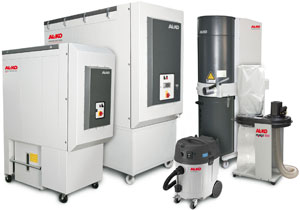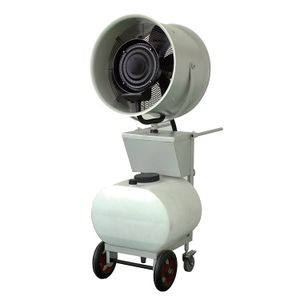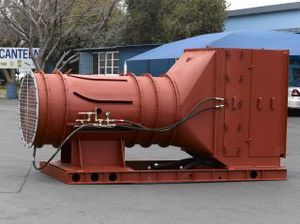Dust Control Equipment
The Dust Control Equipment basically work as dust collectors to collect dust and other impurities from air and are used extensively in mineral processing industries, pulp and paper plants, steel mills, saw mills, metallurgical plants and other industrial applications requiring processing of the dust generated during routine operations. They use inertial, centrifugal and gravitational forces to separate dust from gas streams, forcing the dust particles and other particulate matter to move to an area of least pressure for storage. The dust control equipment are most commonly used as air pollution control devices, however, they also find widespread use in metallurgical industries for recovering valuable granular particles from the process stream.
Most of the current models of the equipment are based on the principles of fabric filtration, wet scrubbing, electrostatic precipitation, unit collection or inertial separation of dust and impurities, with each type having its own set of advantages in its niche industry. You can select dust control equipment based on any of the above principles on the basis of extent of dust collection required and the size and nature of the dust particles generated. A typical Dust Control Equipment features a dust filter, blower, dust removal system and a filter cleaning system and is usually designed to handle large volumes of dust-load.
The dust control equipment are available in various designs and configurations to meet the industrial requirements and can be used as free-hanging systems, portable collector booths or larger stationary units. The more advanced models require zero to minimum ducting and do away with the need for extra ventilation through recirculation of the filtered air back into the working area. The characteristics of the air stream and the use of specific collector systems play an important role in selection of the dust control equipment. Moreover, the dust removal and disposal system used by these equipment also plays a major role in determining their efficiency and efficacy for use in a target industry.
These devices are equipped with efficient centrifugal or axial-flow fans and motor system that ensures continuous movement of the air stream without producing undesirable vibrations and disturbance due to high noise levels. They are highly efficient while working at specific temperature and humidity range of the operating conditions and are quite capable of accommodating minor fluctuations in the total pressure to maintain the desired air volume. The dust control equipment provide protection to the personnel working in a high risk area from acute and chronic health conditions resulting due to continuous inhalation of dust, fumes and smoke and also reduce fire and explosion hazards and material losses due to wind. These highly efficient dust control equipment reduce the operating costs by maintaining the appropriate working conditions to improve production time and prevent premature wear and tear of the working equipment.
Many of the dust control equipment also use wet suppression for dust control. They use mist collectors to remove dust particles in the form of fine mist to improve air quality in the working area. These equipment use corrosion free construction materials and are usually painted in attractive shades for further protection. These dust control equipment are available in pleasant, visually appealing designs and are safe to use and easy to maintain.
Benefits of Dust Control Equipment
- Control and reduction of lost product
- Return valuable lost product such as COPPER, GOLD, PLATINUM, SILVER etc. back into the process
- Environmental standards improvement to meet MSHA / Local standards
- Protect and Extend wear life on capital equipment and spare parts. Cost savings on moving components like bearings, idlers, belts, control systems.
- Quality of life / Good housekeeping
Video


